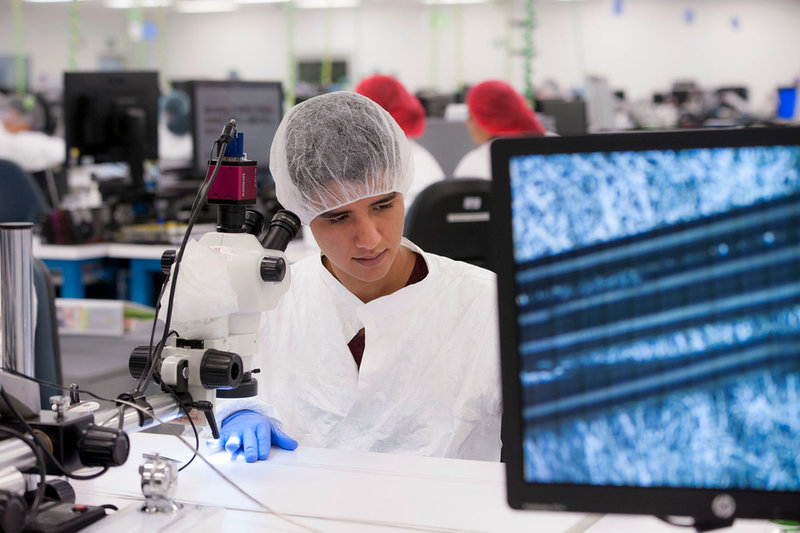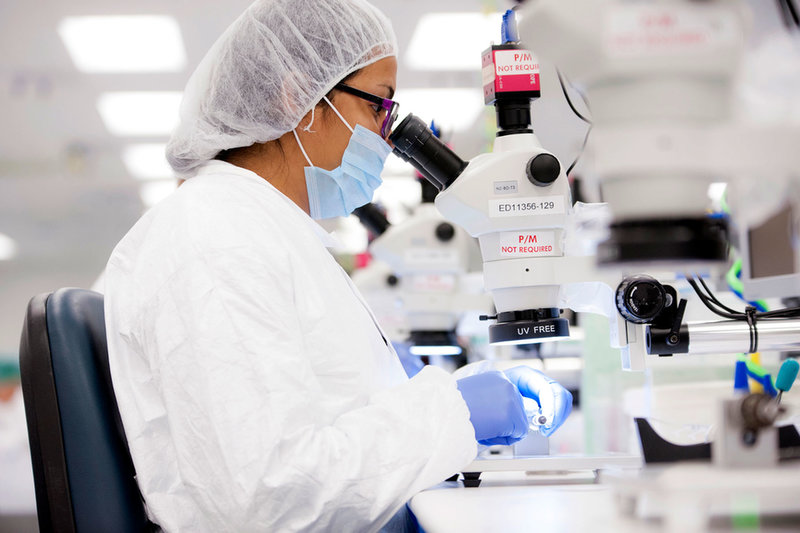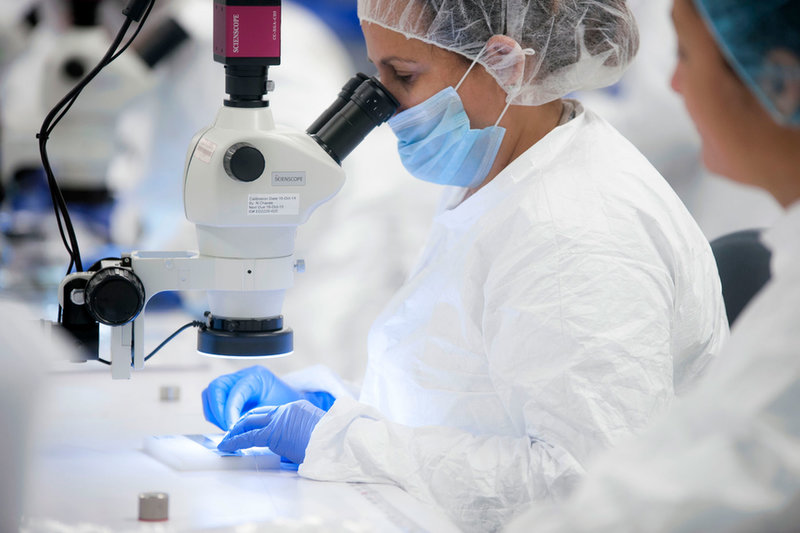Regional Focus
Inside Costa Rica’s super-sized medical device sector
In 2017, medical devices became Costa Rica’s top export, surpassing the agricultural sector for the first time in the country’s history. With more than 70 medical device companies operating in Costa Rica, how has this small nation managed to develop such a successful and fast-growing medical technology sector? Chris Lo finds out.
F
or developing nations, perhaps the foremost principle driving sustainable economic success is diversification. Diversified economies are more resilient against downturns and less vulnerable to shock changes in the commodities markets. For an effective demonstration of the dangers of relying too much on a single sector, one need look no further than the economic meltdown of oil-dependent Venezuela, where crashing oil prices have sparked hyperinflation, food shortages and civil unrest.
One country that has clearly gotten the message on the benefits of diversification is Costa Rica, the Central American nation of five million inhabitants that Organisation for Economic Co-operation and Development (OECD) secretary-general Ángel Gurría praised as “a development success story” during the presentation of the OECD’s latest economic survey of the country in April this year.

Pilar Madrigal, head of investment promotion at CINDE. Image courtesy of CINDE
Medical devices: Costa Rica’s prime export
Only a few decades ago, Costa Rica was principally known for its agricultural exports of products such as fruits, coffee and sugar, but since the late 1990s, the country has made great strides in educating its workforce and nurturing new high-tech and service-based sectors, including consumer electronics, finance and tourism.
“What put Costa Rica on the map a long time ago was an investment by Intel [in 1997],” says Pilar Madrigal, head of investment promotion at the Costa Rican Investment Promotion Agency (CINDE). “That was the first high-tech industry to set up big operations in the country.”
But, as demonstrated by Intel’s decision to downsize its Costa Rican business in 2014, consumer electronics and other sectors are known for their cyclical nature. Having already secured the investment of medical equipment giant Baxter, which set up operations in the country in 1987, medical devices were targeted as a key sector for Costa Rica’s ongoing economic diversification in the late 1990s and early 2000s.
“We needed to make sure that we found, as a country, an industry that we knew was going to be a very stable industry in terms of growth,” says Madrigal. “We knew that with the forecast of the medical device and healthcare industry, this was an industry that would clearly prove to be very stable. So we started working on a strategy to promote, leveraging Baxter’s experience in the country, and start attracting a number of other companies along the same path as Baxter.”
Cardio medical devices are by far the largest export in the country.
Jumping forward to 2018, the progress of the medical device sector in Costa Rica is impressive. Medical equipment exports from Costa Rica have tripled since 2007, says Madrigal, and last year the life sciences industry overtook agriculture to become the country’s top export, with a combined export value of just under $3bn and comprising 27% of Costa Rica’s outgoing trade. The country is second only to Mexico as a medical device exporter in Latin America.
Over the years, the Costa Rican medical device industry has expanded and diversified, with growing sophistication in the devices manufactured locally.
“We used to be pretty much just disposables, and today we have a very good balance between disposables, medical and surgical instruments, therapeutic devices, and now we’re going into diagnostic equipment,” Madrigal notes. “Cardio medical devices are by far the largest export in the country, but we have orthopaedics, we have diagnostic equipment, we have endoscopy, neuromodulation, infusion systems, optics – so we really have diversified. We typically say that we cover the whole body.”

Image courtesy of CINDE
Building up the medical device sector
Today’s medical device sector in Costa Rica is made up more than 70 companies, including major multinational players such as Baxter, Medtronic, Allergan, Boston Scientific and Hologic. So how has the country lured such a large and diverse field of foreign investors?
First and foremost, unsurprisingly, is a powerful fiscal incentive. Under Costa Rica’s free trade zone incentive system, new medical technology firms are able to operate tax-free for a number of years, providing leeway to establish their operations and find their feet.
“[The tax exemption] is granted by the law, so it’s not something that is negotiated company-by-company,” Madrigal says. “It really allows the companies to forecast their finances based on a tax exemption status.”
We currently have a network of free-trade agreements that make us partners with around 50 different countries.
Other factors are related to Costa Rica’s high standards of education, which has boosted the country’s pool of skilled labour, perfect for a highly regulated industry that must conform to exacting quality measures. Costa Rica has even established – in conjunction with the University of Minnesota – Latin America’s first Master’s degree in medical devices.
“Costa Rica has dedicated at least 8% of our GDP to education,” says Madrigal. “That has led to having the ideal labour force that is highly educated, that is easily trainable, and that understands the demands of the medical device industry.”
Costa Rica also benefits from its geographic location, with strong links to the US and Europe, as well as generally high fluency in English in the population, which explains the heavy presence of US-based companies in the market.
“Part of the reason we’ve become a hub is because we currently have a network of free-trade agreements that make us partners with around 50 different countries,” says Madrigal. “We access a large amount of GDP from Costa Rica. So today, that open economy has allowed the country to manufacture those medical devices and export them globally.”

Image courtesy of CINDE
Adjusting to a digital future
Each year, CINDE organises the Life Sciences Forum Costa Rica to bring the industry together and discuss the prevailing issues and opportunities in medical equipment and technology. This year’s event will take place in October – so what is on the sector’s mind this year? As is par for the course in virtually any industry in the 21st century, digital dominates the discussion.
“We know that there is a big change in the global healthcare system, in which there’s a convergence between digital technology and AI and cybersecurity, and the medical device industry,” Madrigal says. “So it’s the convergence of IT and medical devices. That is really the focus of the Life Sciences Forum.”
Working out how to leverage connected technologies and machine learning in next-generation devices is up to the industry, but as far as the Costa Rican Government is concerned, providing a stable regulatory and operational background for these developments is the core consideration.
April’s run-off general elections saw Carlos Alvarado Quesada take power, with the presidency retained by the centre-left Citizens’ Action Party. In a period prone to shock election and referendum results, Alvarado’s victory represents a comforting continuity for medical device manufacturers.
There’s a convergence between digital technology, AI, cybersecurity, and the medical device industry.
“We actually just recently had an event with all the different multinationals, not only medical devices,” Madrigal says. “The president was there along with his economic team. The message is firstly reiterating the commitment to attracting foreign direct investment, and secondly, the stability of the incentive systems that the country grants. There is no expectation at all that this government will change any of the rules.”
Looking to the future, Madrigal says the country expects to increase its annual medical device export value from around $3bn now to $5bn by 2020, an ambitious goal that might well be achievable on the evidence of the sector’s soaring rise so far. The industry’s wave of M&A may help, says Madrigal, by exposing more companies to the country through acquisitions of firms with Costa Rican operations.
Even so, organisations such as CINDE remain tireless in their efforts to improve the country’s competitiveness to medical device investors.
“We have been working on understanding the global incentives that are given in competitive countries, and we are working on potentially visualising to the government some incentives that are more on the innovation side,” Madrigal says. “It’s in the early stages, and we work very closely with our Ministry of Science and Technology and the Ministry of Commerce, and clearly the president of the country. We see nothing but positive things for the industry in our country.”

Image courtesy of CINDE